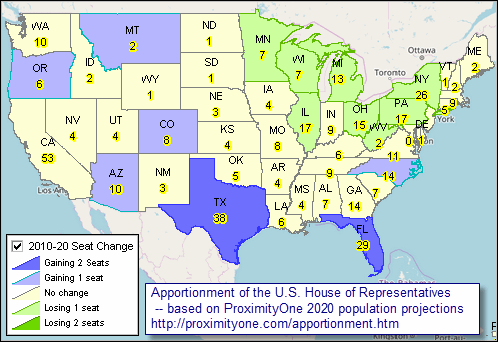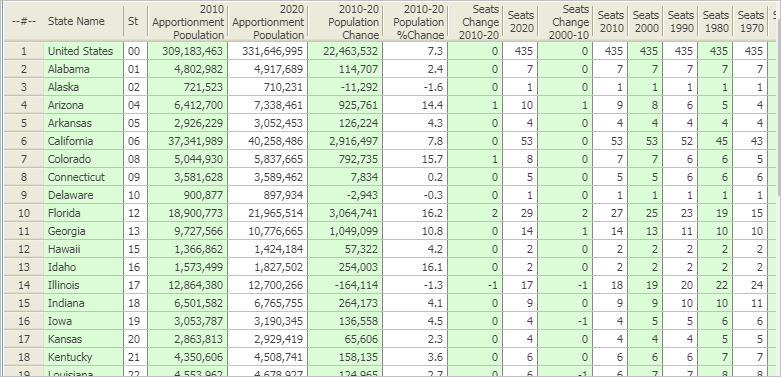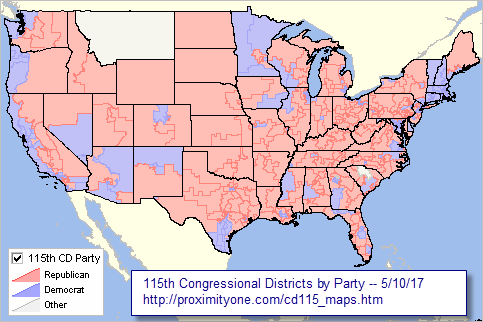.. Congressional District Analysis and Insights .. tools to examine patterns of median household income .. median household income is one measure of economic prosperity. This section reviews patterns of median household income (MHI) by 116th Congressional Districts based on the 2018 American Community Survey 1-year estimates (ACS 2018). View, rank, compare the MHI by congressional district, among related demographic attributes using the interactive table on the main Congressional Districts page.
116th Congressional District Analysis & Insights
.. patterns of household income & economic prosperity:
Based on the ACS 2018 median household income (MHI):
• the MHI among all districts was $60,291
• the U.S. overall MHI was $61,937
As of November 2019:
• the 19 districts with highest MHI have Democrat incumbents
• the 10 districts with the highest Gini Index have Democrat incumbents
• there are 69 Republican incumbent districts above the all districts MHI
• there are 149 Democrat incumbent districts above the all districts MHI
• the MHI of the 236 Democrat incumbent districts is $66,829
• the MHI of the 199 Republican incumbent districts is $56,505
Median household income is only one measure of economic prosperity.
See more at http://proximityone.com/cd.htm.
Patterns of Economic Prosperity 116th Congressional District
The following graphic shows patterns of 2018 median household income by 116th Congressional District. Use GIS tools/data to generate similar views for any state and/or drill-down. Click graphic for larger view with more detail. Expand browser window for best quality view.

– view developed using ProximityOne CV XE GIS and related GIS project.
Using the Interactive Table –
— view, rank, compare districts based on your criteria.
— example,which districts have the highest median household income?
Use the interactive table to examine incumbency and and demographic characteristics of the 116th Congressional Districts (CDs). The following view illustrates use of the table. This view shows use a query to show the ten CDs having highest 2018 median household income.

Try using the interactive table to existing districts and categories of interest.
Congressional District/State Legislative District Group
Join in .. be a part of the Congressional Districts/State Legislative District (CDSLD) group. Access analytical tools and data. Learn about CDSLD analytics, patterns and trends. Share insights with like-minded stakeholders.
Demographic-Economic Analytics Web Sessions
Join me in a Demographics Analytics Lab session to discuss more details about accessing and using wide-ranging demographic-economic data and data analytics. Learn more about using these data for areas and applications of interest.
About the Author
— Warren Glimpse is former senior Census Bureau statistician responsible for innovative data access and use operations. He is also the former associate director of the U.S. Office of Federal Statistical Policy and Standards for data access and use. He has more than 20 years of experience in the private sector developing data resources and tools for integration and analysis of geographic, demographic, economic and business data. Contact Warren. Join Warren on LinkedIn.









